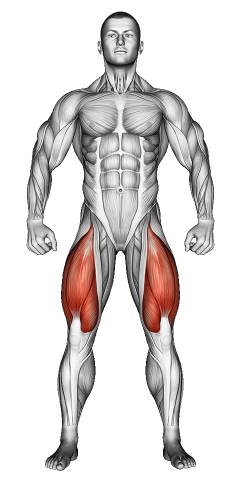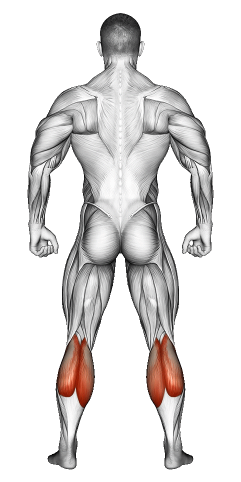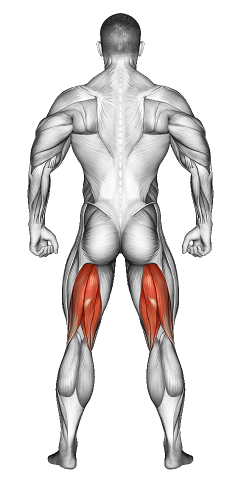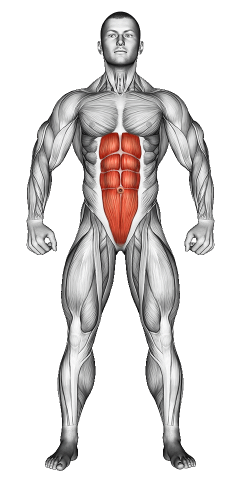High Knees: Video Tutorial & Exercise Guide

Written By: Claude Michael
Updated: Jan 14, 2025
| Workout | High Knees |
| Primary Muscle Group | Quads |
| Secondary Muscle Group | Calves, Hamstrings, Abs |
| Equipment Required | None |
| Force Type | Bodyweight |
| Mechanics | Cardio |
| Exercise Type | Cardio |
| Difficulty | Beginner |
High Knees: Video Tutorial & Exercise Guide
Secondary Muscles Group
High Knees: Step-by-Step Guide
- Step 1: Stand tall with your feet hip-width apart. Keep your core tight, back straight, and arms relaxed at your sides. This stance helps you stay balanced and ready to move.
- Step 2: Start by lifting one knee up toward your chest, aiming to get it to hip level or higher. As you lift, swing the opposite arm forward, like you’re running in place.
- Step 3: Quickly switch legs, lifting the opposite knee toward your chest as you swing the other arm forward. Focus on a smooth, rhythmic motion to keep your balance.
- Step 4: Pick up the speed, staying light on your feet. Drive each knee up with energy and keep your core engaged to help you stay stable and strong.
- Step 5: Keep moving for your set time or reps. Breathe steadily, inhaling as one knee comes up and exhaling as you switch. You’re doing great! High Knees are all about energy, so keep pushing and stay focused.
High Knees: Overview
High Knees offer a fast, effective cardio move that strengthens your legs, engages your core, and boosts your heart rate. This exercise adds intensity to your workout, making it perfect for cardio, warming up, or just adding a burst of energy to your routine. High Knees work well for all fitness levels, making it a versatile move for any session.
High Knees: Benefits
High Knees strengthen your legs, improve your endurance, and help you burn calories fast. This exercise also engages your core, improves coordination, and builds stamina. With High Knees, you get a full-body cardio move that boosts your heart rate and keeps you light on your feet.
High Knees: Pro Tips & Advanced Techniques
- Stay Light and Quick: Stay on the balls of your feet and keep your knees slightly bent to protect your joints and keep your movements smooth.
- Engage Your Core: Keep your core tight to help stabilize your upper body and prevent leaning back or forward.
- Lift Your Knees High: Aim to get your knees up to hip level or higher to maximize the benefits of each rep.
- Breathe Consistently: Inhale as you lift one knee, exhale as you switch. This keeps you steady and energized.
High Knees: Progression Plan
Beginner
Intermediate
Advanced
High Knees: Frequently Asked Questions (FAQs)
What muscles do High Knees work?
+High Knees target your legs, especially your thighs and calves, and engage your core for stability.
Can I add High Knees to any workout?
+Yes! High Knees work great for warming up, adding cardio to your workout, or as a quick energy boost.
How do High Knees improve cardiovascular health?
+High Knees quickly raise your heart rate, helping build cardiovascular endurance and stamina.
Can High Knees help with weight loss?
+Absolutely! High Knees burn calories fast, making them effective for weight loss when done regularly.
How often should I do High Knees?
+Add High Knees to your routine 2-3 times a week as part of a cardio workout or circuit.
What mistakes should I avoid?
+Avoid leaning forward or back—keep your posture tall. Stay light on your feet, drive your knees up, and focus on controlled, quick movements.
Share
Don’t Wish for It, Work for It – Join the FlexXP Newsletter Today!
Thank you for signing up for the FlexXP Newsletter!
This site is protected and the Google Privacy Policy and Terms of Service apply.



